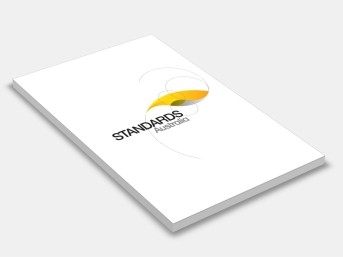AS/NZS 4859.1:2018 Thermal insulation materials for buildings, Part 1: General criteria and technical provisions
Standards Australia/Standards New Zealand
This Standard was prepared by the Joint Standards Australia/Standards New Zealand
Committee BD-058, Thermal Insulation, to supersede, AS/NZS 4859.1:2002, Materials for
the thermal insulation of buildings, Part 1: General criteria and technical provisions.
The objective of this revision is to restructure the Standard as a material properties and test
methods Standard and include latest thermal insulation products testing not previously
covered by the Standard.
The significant changes in this edition are as follows:
(a) The relocation of all thermal insulation system design to a separate Part of this series
(i.e. AS/NZS 4859.2).
(b) The deletion of the references to the AS 1366 suite of Standards.
(c) The inclusion of a wider range of thermal insulation materials and, in particular, rigid
foam products.
Emphasis has been given to the development of clear and concise requirements for
determination and labelling of thermal performance, a primary performance requirement for
these materials. Another consideration is the effect of ageing of materials where there is a
significant change in the insulation properties of those materials over time.
In this Standard, notes to the main text are for information and guidance only.
The terms ‘normative’ and ‘informative’ have been used in this Standard to define the
application of the appendix to which they apply. A ‘normative’ appendix is an integral part
of a Standard, whereas an ‘informative’ appendix is only for information and guidance.
If alternative tests to those prescribed in this Standard are to be used, they would need to be
considered as part of the development of a Performance Solution to demonstrate compliance
with the relevant Performance Requirements of the National Construction Code (NCC) and
be accepted by the relevant building authority.
Originated in Australia as part of AS2352—1980, AS 2461—1981, AS 2462—1981, AS 2463—1981, AS 2464.1—1981, AS 2464.2—1981, AS 2464.3—1983, AS 2464.4—1981, AS 2464.5—1985, AS 2464.6—1983, AS 2464.7—1990 and AS 3742—1990. Originated in New Zealand as NZS 1340:1959. Final New Zealand edition NZS 4222:1992. AS 2352—1980, AS 2461—1981, AS 2462—1981, AS 2463—1981, AS 2464.1—1981, AS 2464.2—1981, AS 2464.3—1983, AS 2464.4—1981, AS 2464.5—1985, AS 2464.6—1983, AS 2464.7—1990, AS 3742—1990 and NZS 4222:1992 jointly revised, amalgamated and redesignated as AS/NZS 4859.1:2002.
This Standard provides general criteria, technical provisions and methods of test for
materials that are used for thermal insulation within buildings, including materials used for
thermal insulation of ductwork and pipework.
Specific requirements for individual materials or insulation types are given in Sections 4
to 9.
This Standard does not address the following:
(a) Materials for the insulation of windows or glazing.
(b) Fire performance.
(c) Installation requirements of thermal insulation.
(d) Performance requirements of systems or materials that have some primary function
other than providing thermal insulation.
Contents:
Section 1: Scope And General
Section 2: Criteria And Technical Provisions
Section 3: Packaging And Labelling
Section 4: Cellulose Fibre Insulation
Section 5: Insulation Containing Wool
Section 6: Low Density Polyester Fibre Insulation
Section 7: Low Density Mineral Wool Insulation
Section 8: Rigid Cellular Foam Insulation
Section 9: Ir Reflective Insulation
Appendix A: Guidance On Thermal Resistance Measurement
Appendix B: Determination Of The Thickness And Density Of Compressible
Fibrous Insulation Using Astm C167 With Variations
Appendix C: Determination Of The Thermal Resistance Of Loose Fill
Insulation Using Astm C687 With Variations
Appendix D: Determination Of Corrosiveness
Appendix E: Resistance To Surface Corrosion And Wet Delamination At
Elevated Ambient Temperatures (Ir Reflective Insulations)
Appendix F: Typical Depth Gauges For Thickness Measurements
Thermal Insulation.
Aluminium Foil Insulation Association; Australian Building Codes Board; Australian Cellulose Insulation Manufacturers Association; Australian Institute of Refrigeration Air Conditioning and Heating; Australian Professional Thermography Association; AWTA Product Testing; Building Research Association of New Zealand; Consumers Federation of Australia; CSIRO; Engineers Australia; Housing Industry Association; Insulation Association of New Zealand; Insulation Australasia; Insulation Council of Australia and New Zealand; Master Builders Australia; Master Plumbers Australia; National Electrical and Communications Association; New Zealand Metal Roofing Manufacturers; Pliable Membranes Association of Australia and New Zealand; Roofing Association of New Zealand; Roofing Tile Association of Australia; Thermal Insulation Contractors Association of Australia, NSW.
